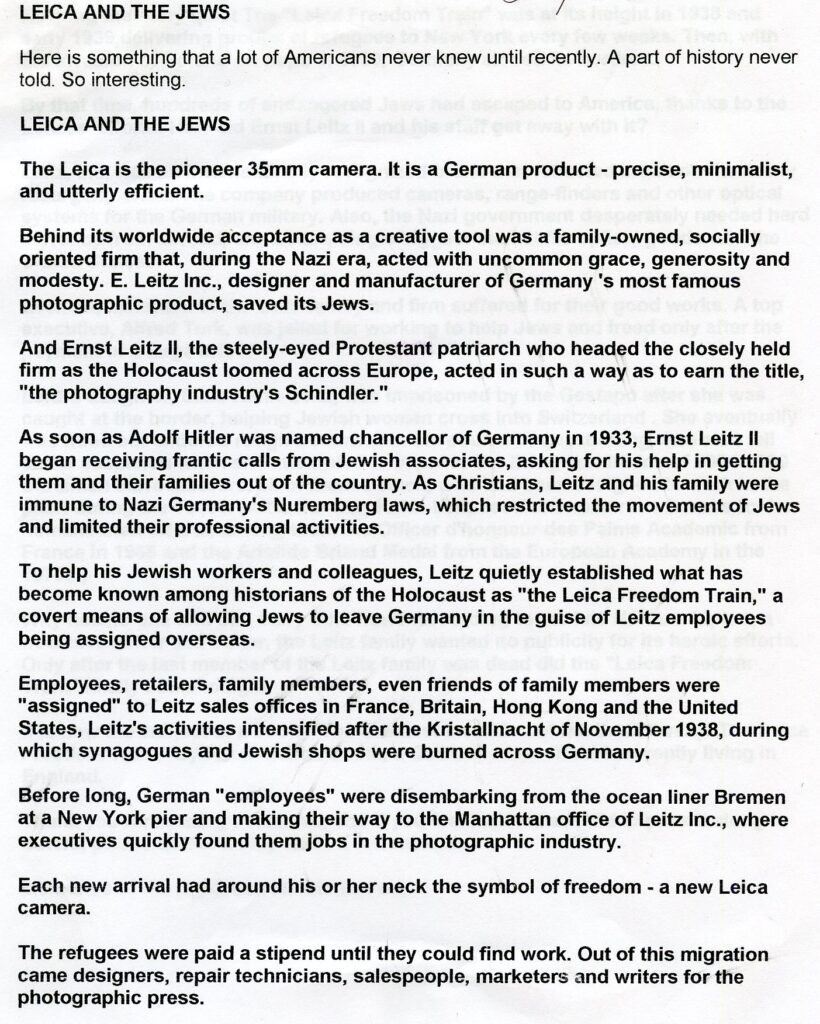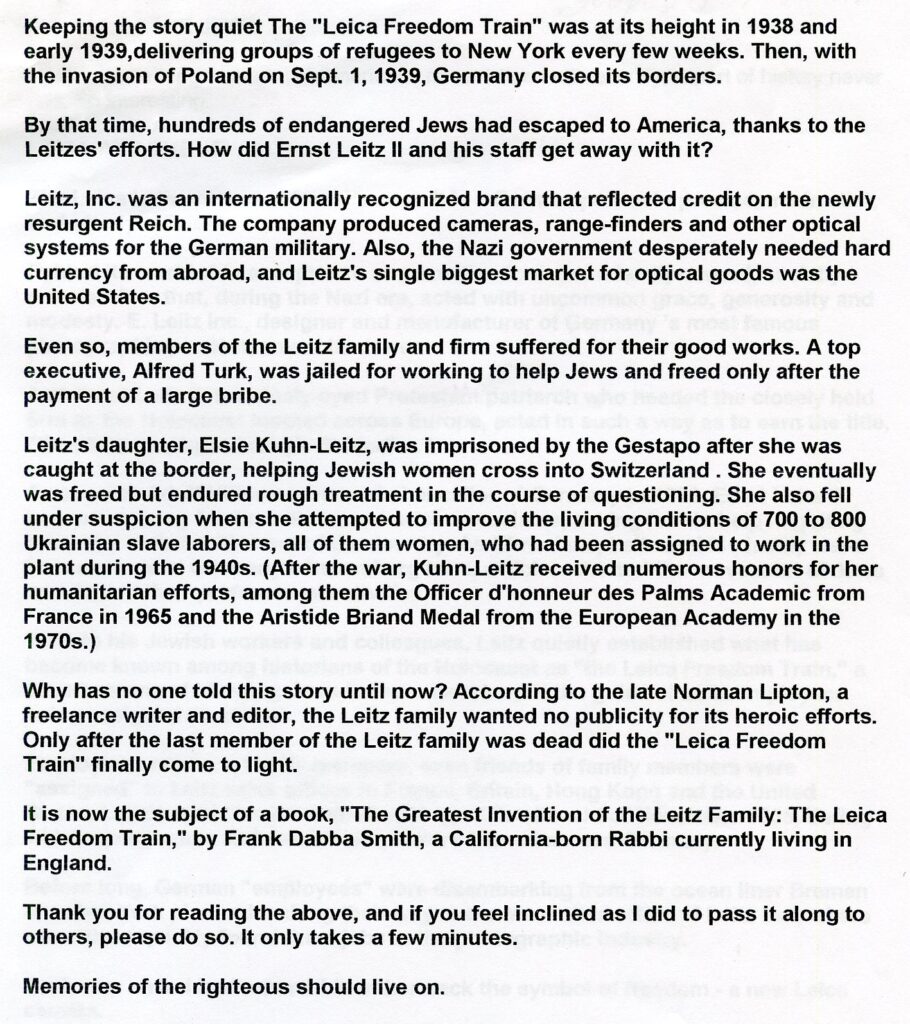Scopes
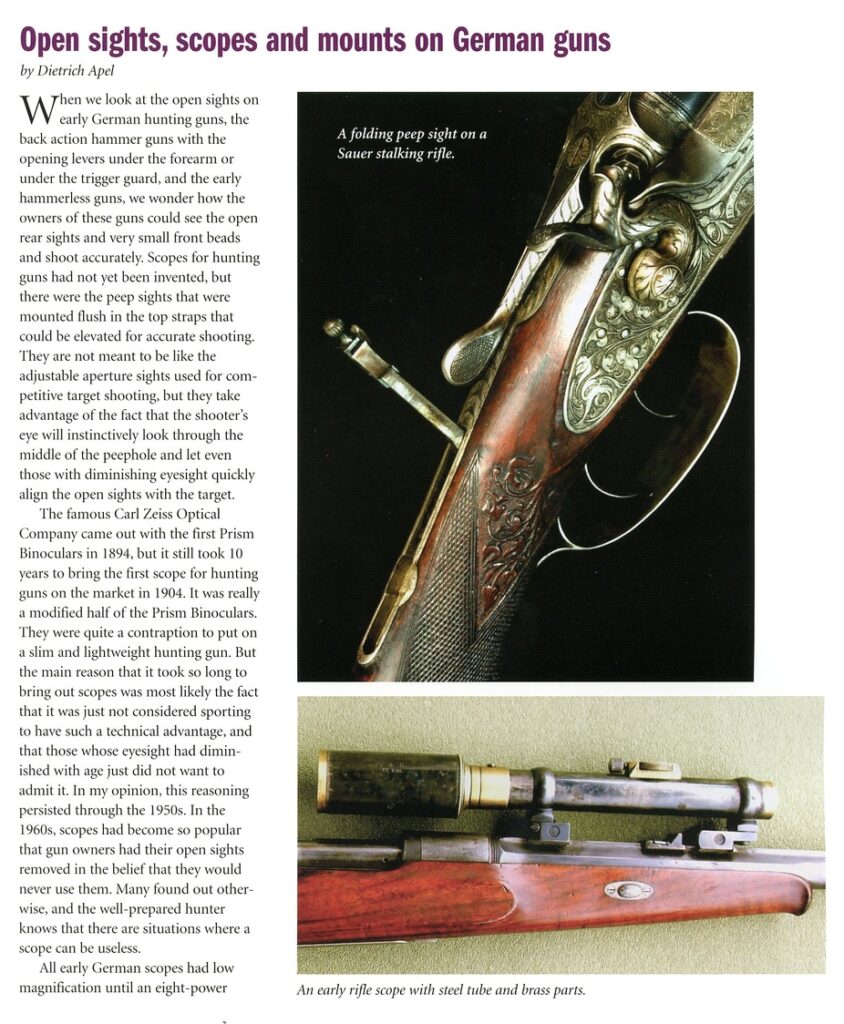
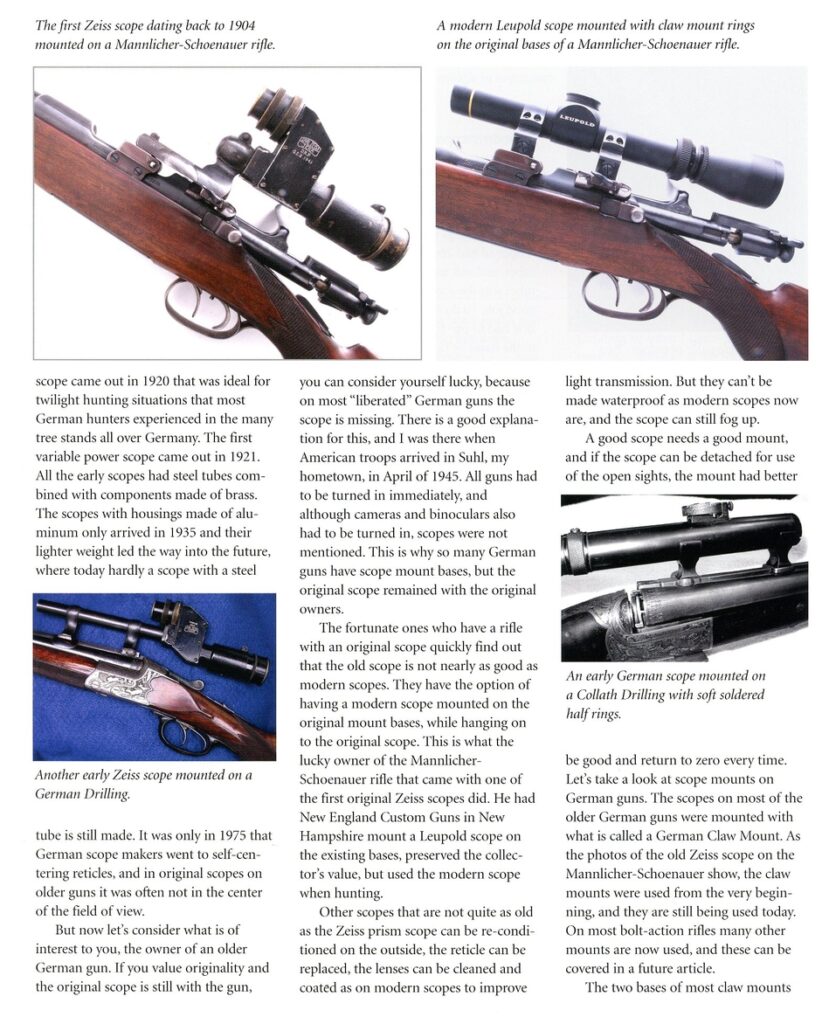
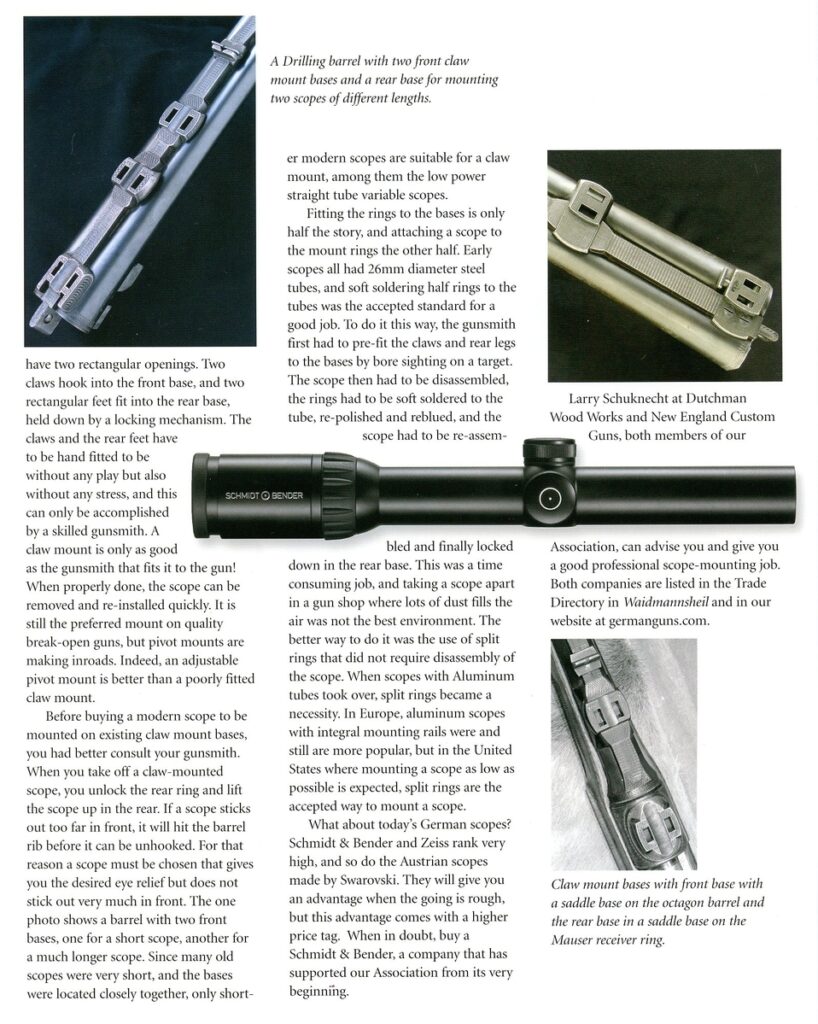
By Larry B. Schuknecht
I am no authority on Scopes and the following material will certainly not be complete and may contain errors. If you find one please let me know so it may be corrected. Also any new material is certainly welcome.
To read a story about the modern scope maker Schmidt & Bender click HERE.
While the practical Telescope as a sight dates back to the 18th Century (ref. Waffen Lexikon, 1952 Edition), it’s form as we know it nowdates back to the 1880’s. Richard Marholdt in his book Waffen Lexikon illustrates a scope made in 1889 and the 1896 edition of Jahrbuch der Naturwessen Schasten illustrates a scope made by Voightlünder.
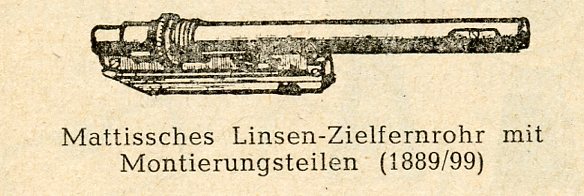
Above: from the Waffen Lexikon by Richard Mahrholdt, 1952 Ed.

Above: From the Jahrbuch der Naturwessen Schasten 1896/1897.
This page will look briefly at each major scope maker and will be added to as information becomes available. After the entries on the scope makers will be articles found about scopes in general.
Emil Busch
The origins of the Emil Busch A.-G. Co. of Rathenow, Germany dates back to1792 when Pastor Johann Heinrich August Duncker (1767-1843) began making optical instruments. His son Eduard took over the business in 1819. In the 1840’s they began making eye glasses. In 1872 the firm became the stock market Co. Emil Busch A.-G. in 1927 Zeiss became a major share holder. With the end of WWII the Company was destryed. (ref.-Camerapedia WIKI)
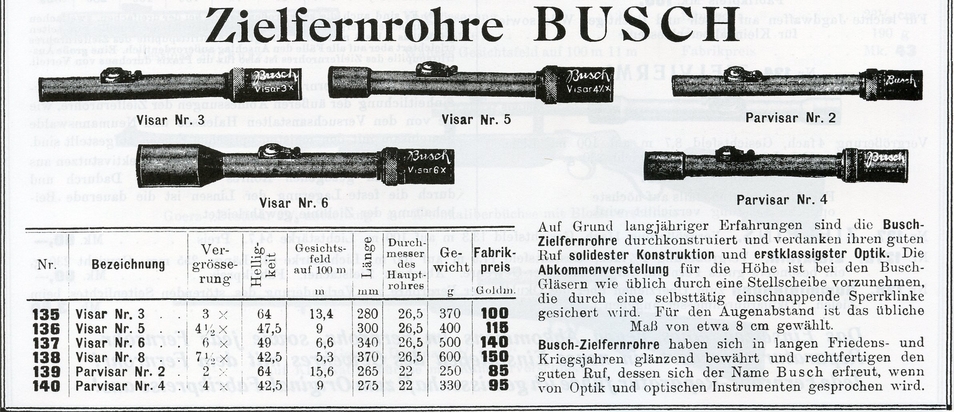
Gérard

C. P. Goerz
The firm of C. P. Goerz (Carl Paul Goerz) in Berlin started in 1888 making drawing instruments for schools and quickly branched into making Cameras and Lenses. This of course led to making Rifle Scopes. In 1895 they started a branch in New York, N.Y. which in 1905 became C. P. Goerz American Optical Co. in 1926 the merger of Goerz with ICA, Contessa-Netel and Ernemann became Zeiss Ikon.
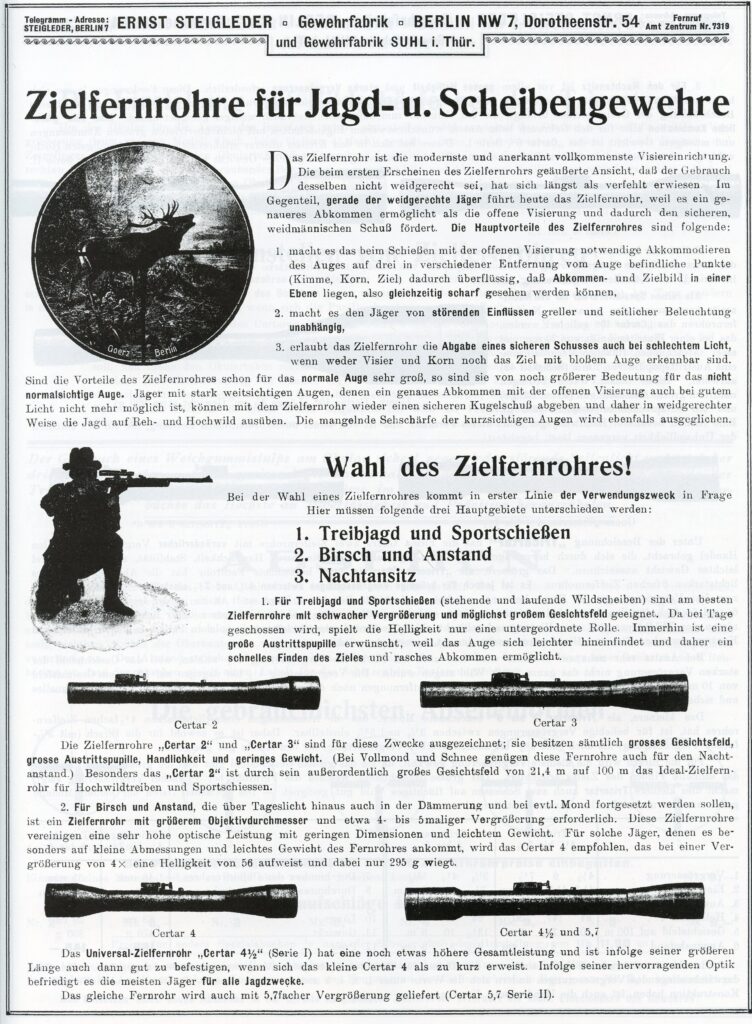
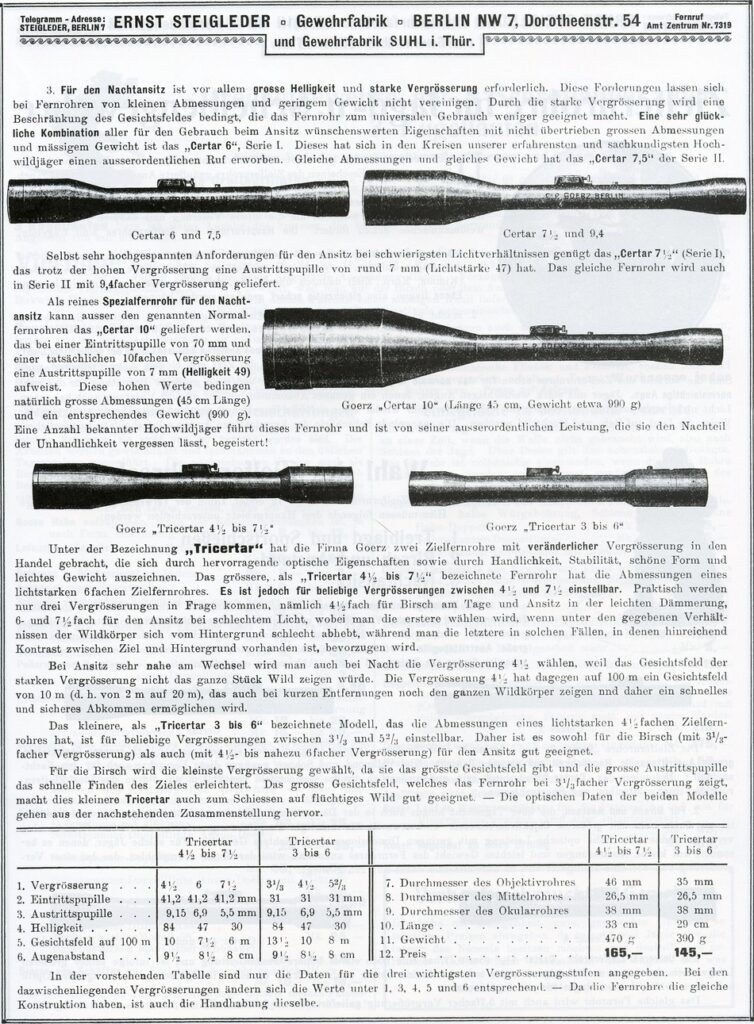
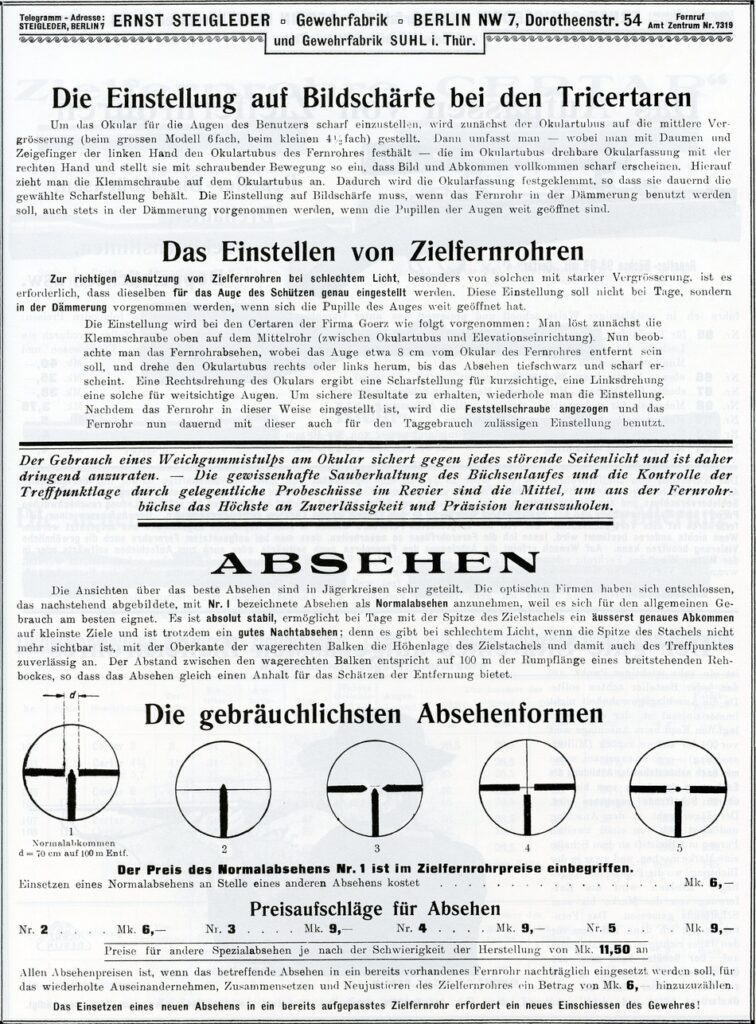
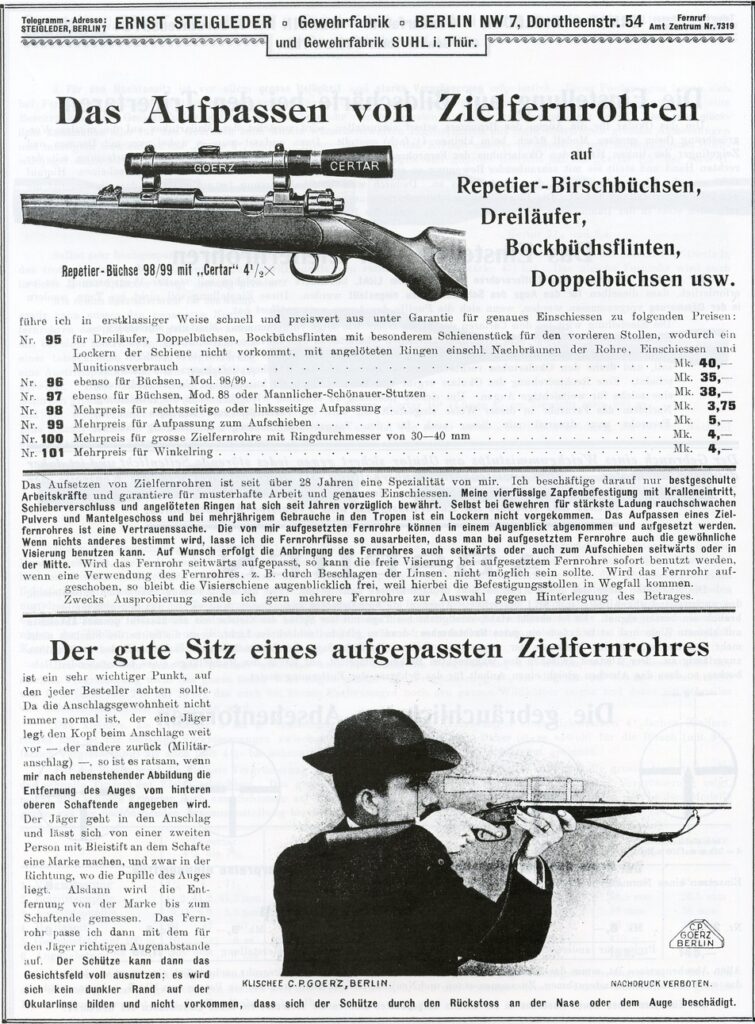
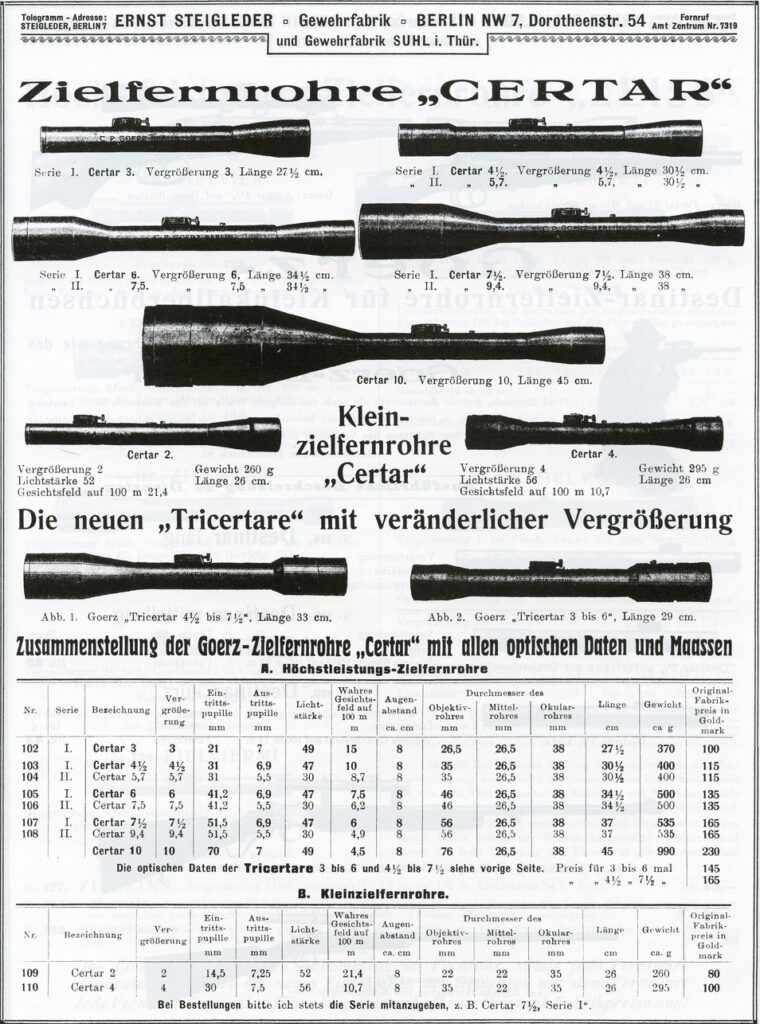
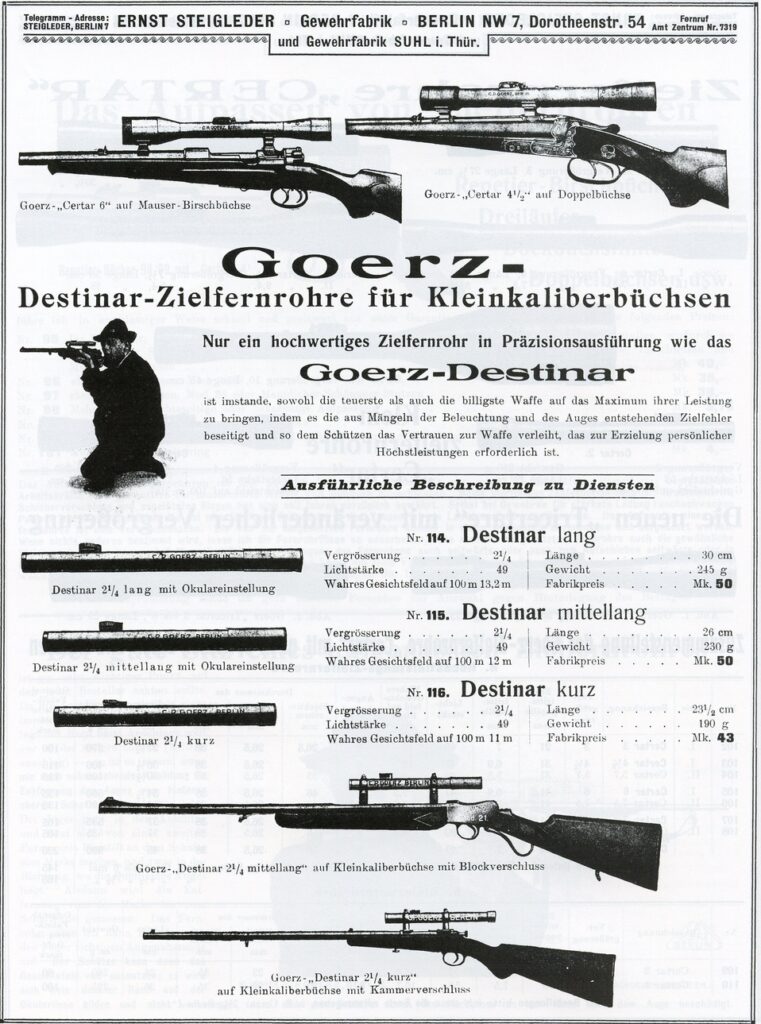
Hensoldt
The firm of Engelbert & Hensoldt was founded in Sonneberg, Thuringia in 1852 and moved to Braunfels in 1861 and finally to Wetzler in 1865. While being a partner in this firm, Moritz Hensoldt had his own Company. The seperate Hensoldt Co. grew and in the 1880’s built a new factory on Sophienstrasse in Wetzler. In 1896 the Company became a general partnership known as M. Hensoldt & Söhne. In 1908 the firm built a new larger factory on Gloëlstrasse. In 1922 the firm became a stock Co. In 1928 the Company was in financial crisis and the Carl Zeiss Foundation became the majority shareholder. (ref.-www.zeiss.com).
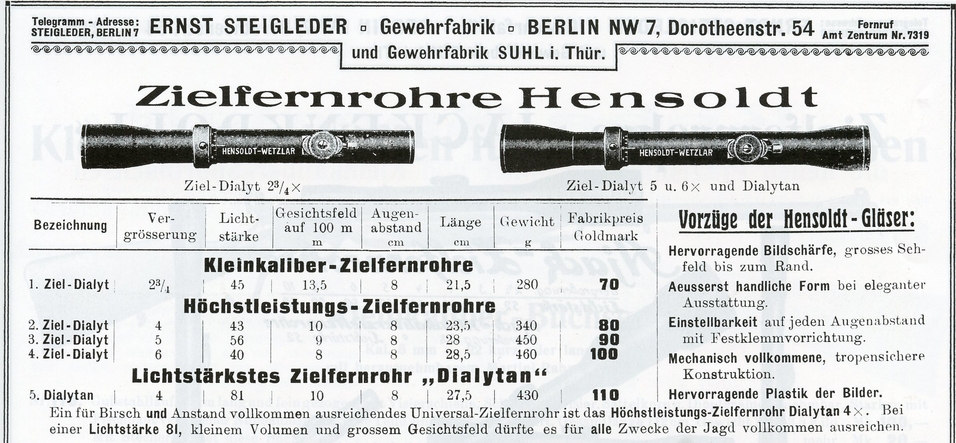
The following appeared in the 1932 (no. 18) Edition of A. F. Stoeger’s Catalog.

The following appeared in the 1939 (no. 31) edition of A. F. Stoeger’s catalog.
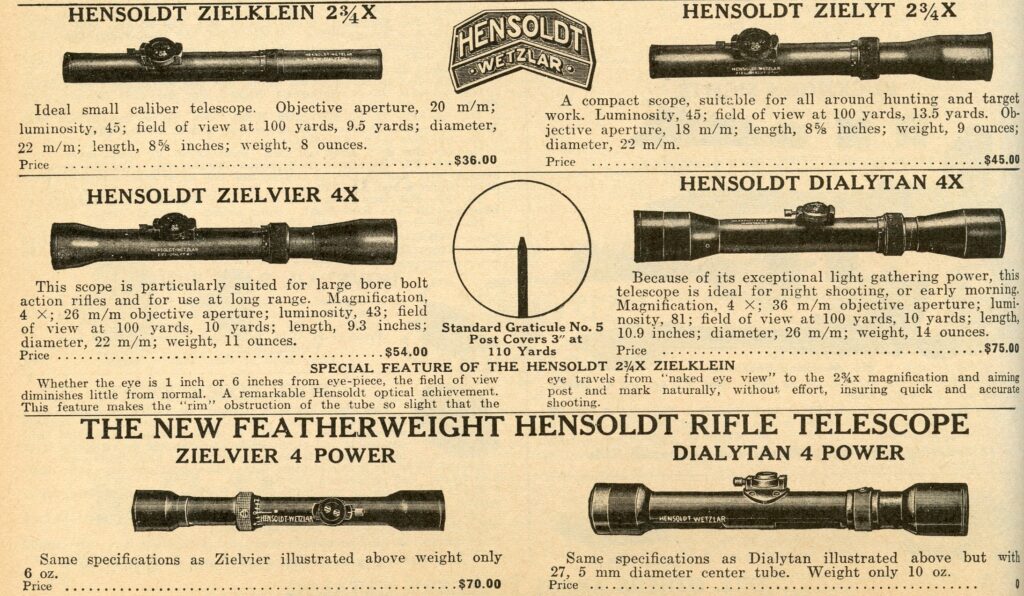
A. Jackenkroll

The following appeared in the 1939 (no. 31) edition of A. F. Stoeger’s catalog.

Oigee
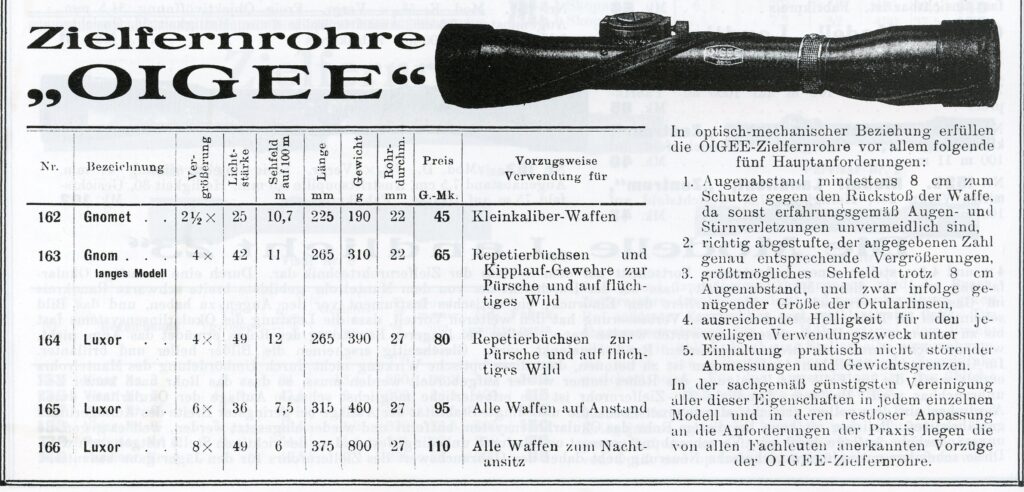
The following appeared in the 1932 (no. 18) edition of A. F. Stoeger’s catalog.

The following appeared in the 1939 (no. 31) edition of A. F. Stoeger’s catalog.

Voightländer
In the mid 1750’s Johann Christoph Voightländer (Nov. 19, 1732-June 27, 1797) began working in the Mathematical Instrument shop of Meinicke in Vienna. He drew attention for his skill and achievements and was recognized by the minister of state of the Habsburg Monarchy-Prince Wenzel von Kaunitz. In 1763 Johann founded his own shop and the Empress Maria Theresa granted Johann a “Protection Decree” or Schutzdekret which allowed him to sell his products with protection from Rivals. Johann was a prolific and successful inventor developing optical devices, machinery and small instruments.
In 1797 Johann and the Voightländer firm received a Landesfabriksbefugnis or “National Commercial License” which allowed him to use the Habsburg Imperial Eagle on their goods and advertising and also allowed them to open branch sales offices anywhere in the Empire. This was also the year that Johann passed away but the firm was on a solid footing and the business was carried on by his widow and their four children.
Around 1840 Johann’s grandson Peter Wilhelm Friedrich Ritter von Voightländer (nov. 17, 1812- April 7, 1878) took over the firm and like his grandfather was very inventive and pioneered many new developments in Optics, Cameras and photography. In 1845 he married the daughter of a well known Lawyer from Braunschweig Germany where he had a Branch Sales office. During the Austrian Revolution of 1848 he became embroiled in theaffairs and fled Vienna and moved to his Wife’s home city of Braunschweig where the firm grew and prospered. The Vienna branch was closed 1868. In 1898 the firm went public and became Voightländer & Sohn AG. In 1923-99.7 percent of the shares in the Company were acquired by Schering AG. Schering sold it’s shares in the Company to the Carl Zeiss Foundation in 1956. (Ref.-voightländer-wikipedia)
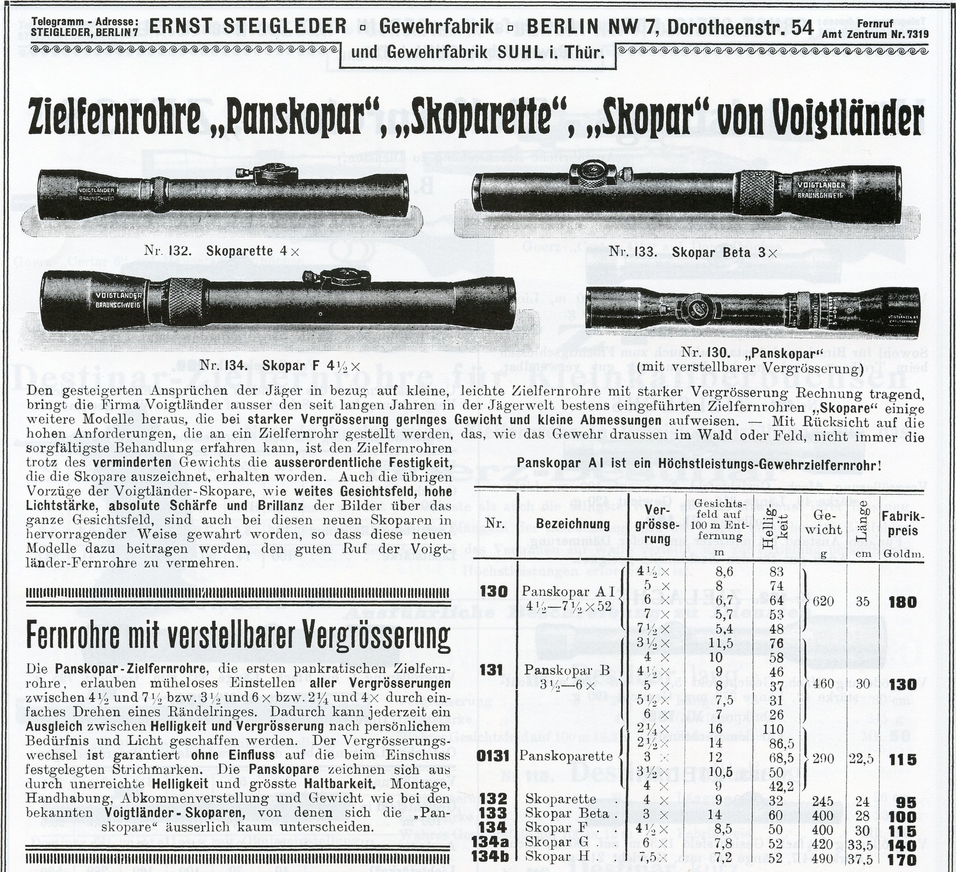
The following appeared in the 1905 edition of Deutsche Jagd und Deutsche Fürsten by Fritz Frenzel.
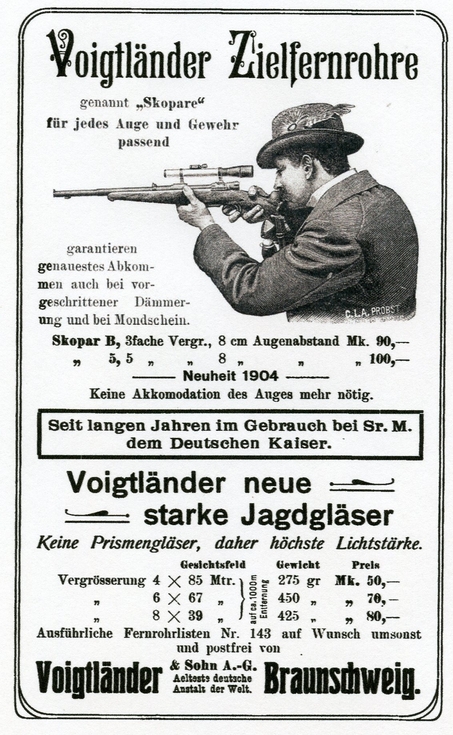
Carl Zeiss
Carl Friedrich Zeiss (Sept. 11, 1816-Dec. 3, 1888) was born in Weimer. He apprenticed in the shop of Dr. Friedrich Körner where he learned the trade of making microscopes measuring and scientific instruments. At the University of Jena, Carl studied Mathematics, Physics, Anthropology and Optics.
On Nov. 10, 1846 Carl received permission from the Weimer Authorities to open his own workshop which he did at Neugasse Strasse 7 in Jena. His main products were Microscopes, measuring, optical and mechanical instruments. In Sept. 1847 Carl moved to a larger building at Wagnerdasse32 and took on his first apprentice. In 1857 he introduced the first compound microscope. The Company employed around 200 employees by 1864 which required a move to an even bigger facility at Johnniplatz 10.
In 1866 Zeiss hired 26 year old Ernst Abbe (Jan. 23, 1840-Jan. 14, 1905) who was a lecturer on physics and Matrhematics at the University of Jena to work as a free lance researcher. it was the start of a fruitful relationship between Xarl Zeiss and Abbe. Abbe became the Director of Research at Zeiss. In 1879 Otto Schott (Dec. 17, 1851-Aug. 27, 1935) contacted Ernst Abbe that he had developed a new kind of glass made with the addition of Lithium. Otto was encouraged to develop new types of Optical Glass.
Carl Zeiss’s son Roderich became a co-partner with his father in 1881. In 1884 Carl and Roderich Zeiss, Ernst Abbe and Otto Schott founded the Glastechnisches Laboratorium Schott & Genossen where they developed new optical and heat resistant glass. In 1889 the Carl Zeiss Stiftung or Carl Zeiss Foundation was set up abd by 1891 Roderich Zeiss and Ernst Abbe had transferred all of their shares in the Zeiss firm to the foundation ensuring that the business would always operate in a socially acceptable and beneficial manner.
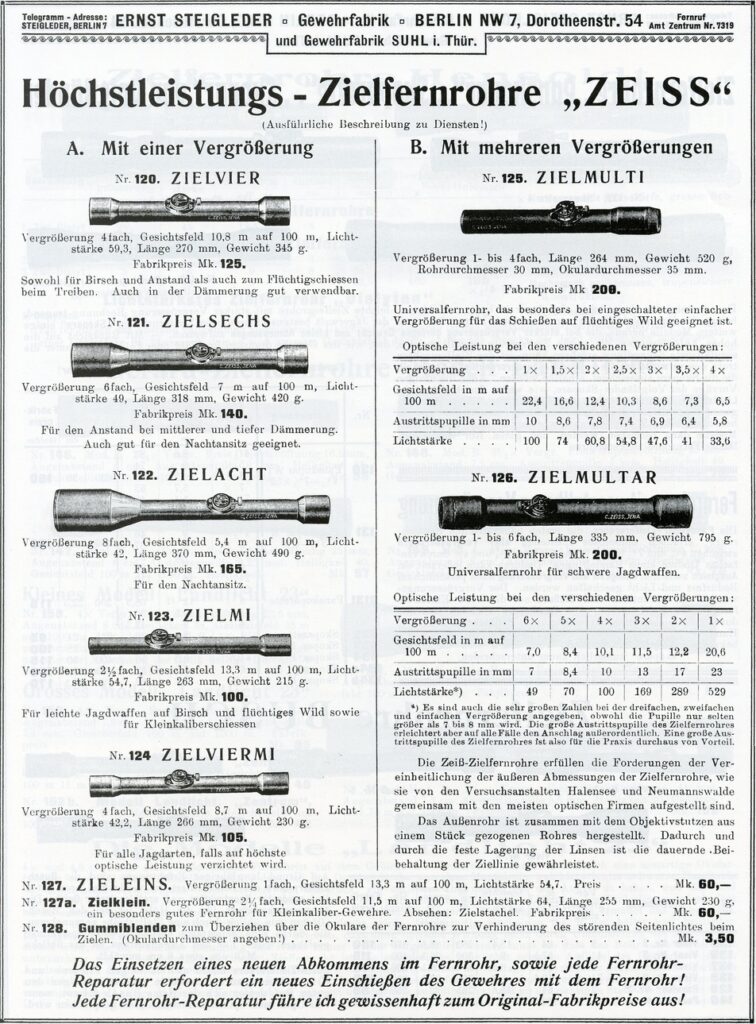
The following appeared in the 1932 (no. 18) edition of A. F. Stoeger’s catalog.
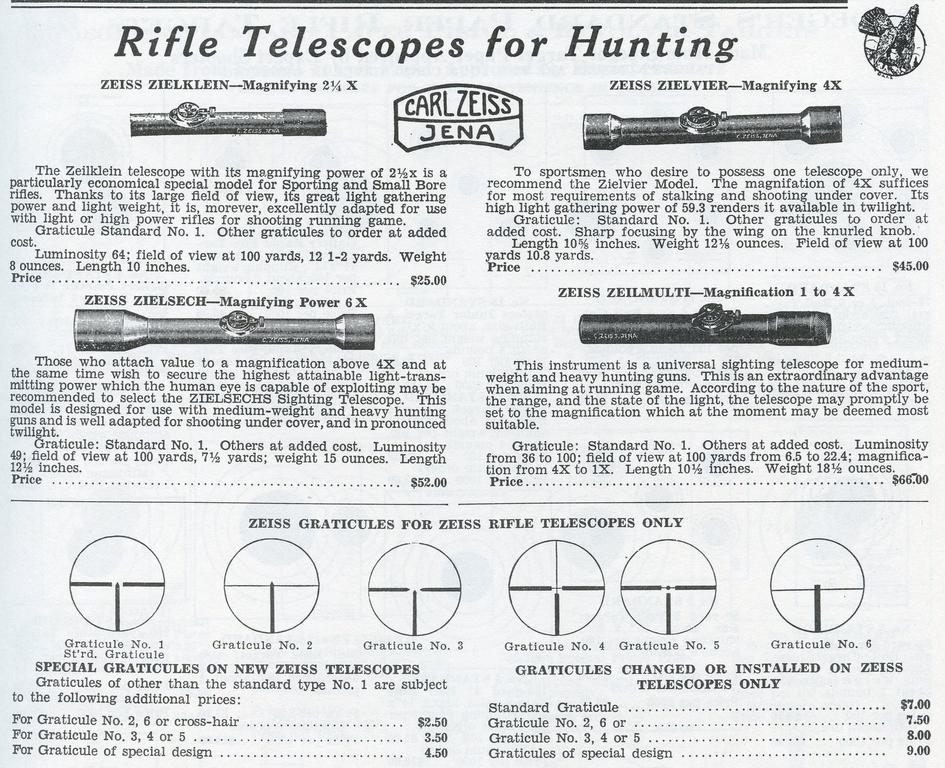
The following appeared in the 1939 edition of A. F. Stoeger’s catalog.
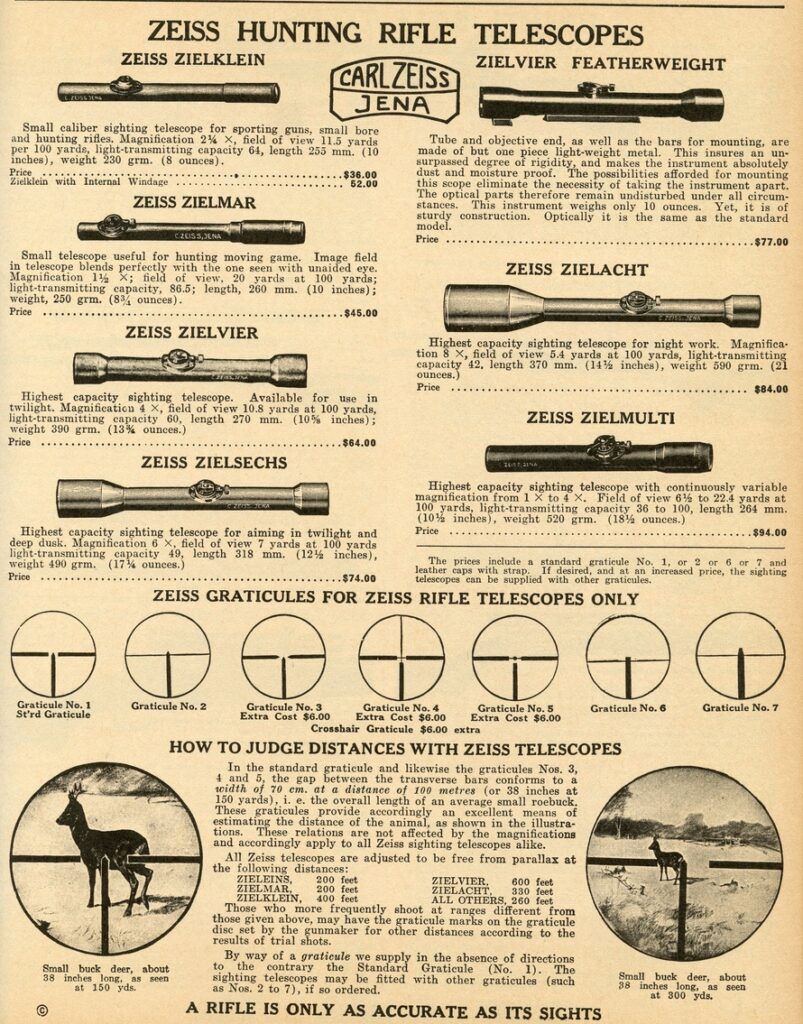
Following is a chapter from the 1914 book Schule der Optik by Dr. Alexander Gleichen &^ Erich Klein.
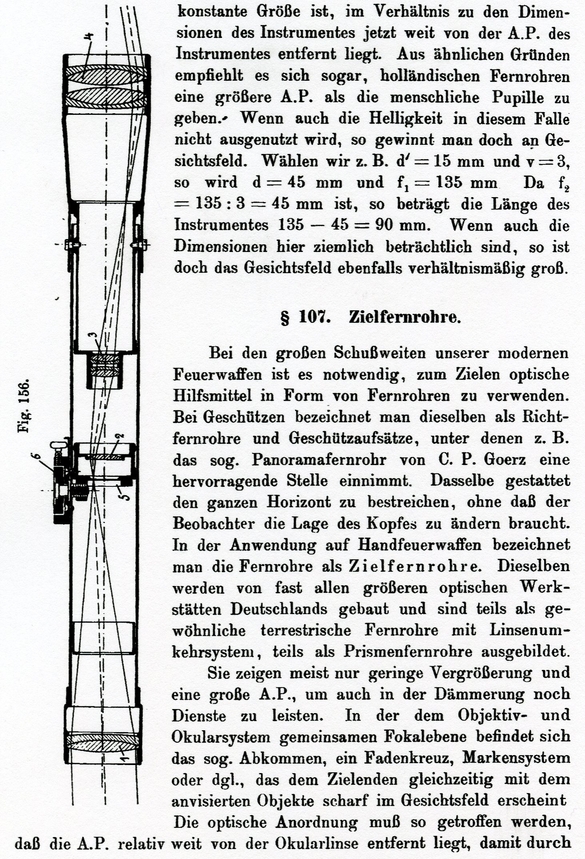
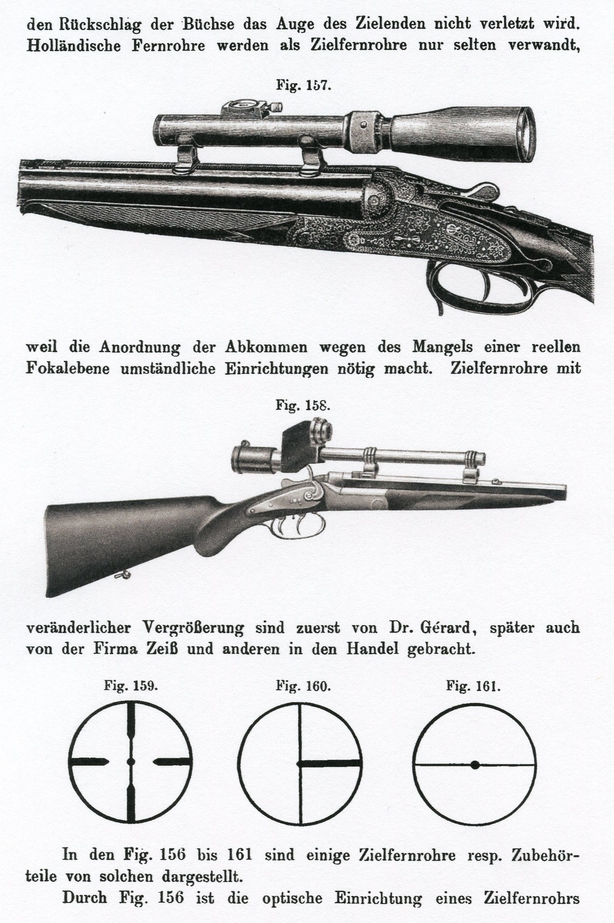
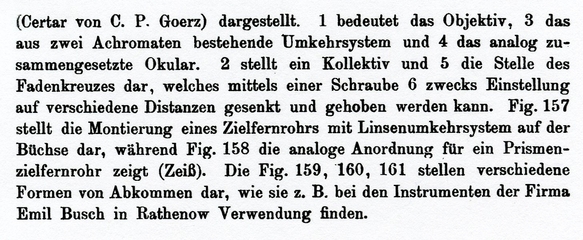
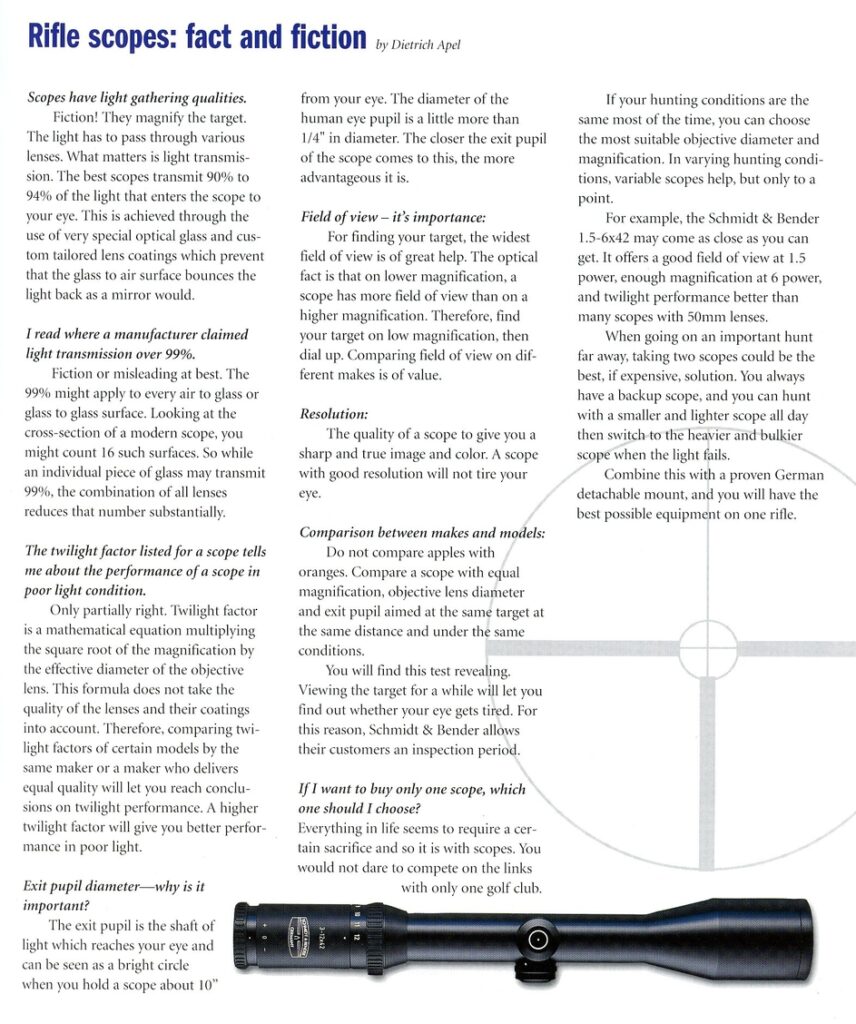
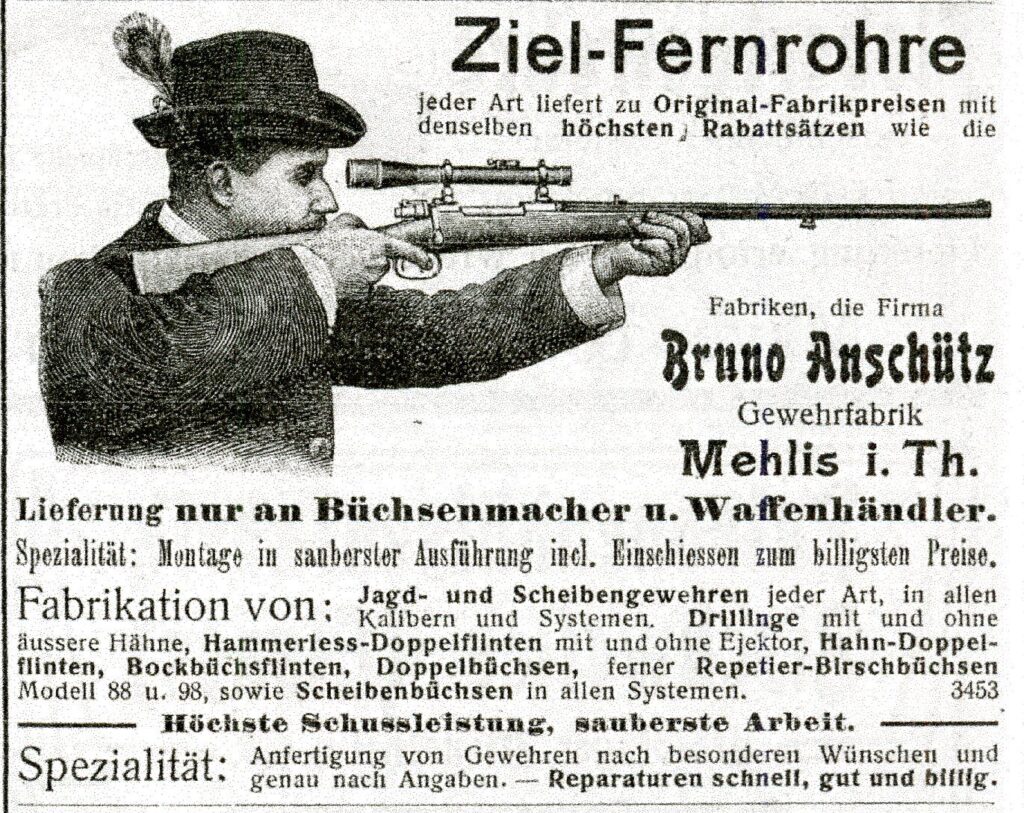
Above: an advertisement for Bruno Anschutz from the 1908 Der Waffenschmied
Shortly after I took over this web site in 2016 my friend and it’s creator-Dietrich Apel passed away. After his family sorted through his things, his archive of material came to me to use to the benefit of the GGCA and those who view the web site. Amongst those things were loose items that he felt he would like to add to the website which were important but not really gun related. The following he had with a notation – “Add to Scopes & Mounts”. It is in honor of him that I include it here. The story had special meaning to him because he was a teen during those times and his grandmother was Jewish and near the end of the War was incarcerated by the Nazi’s and was one of the lucky survivors.
